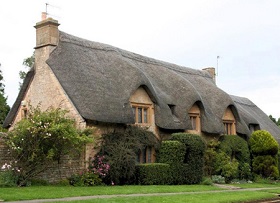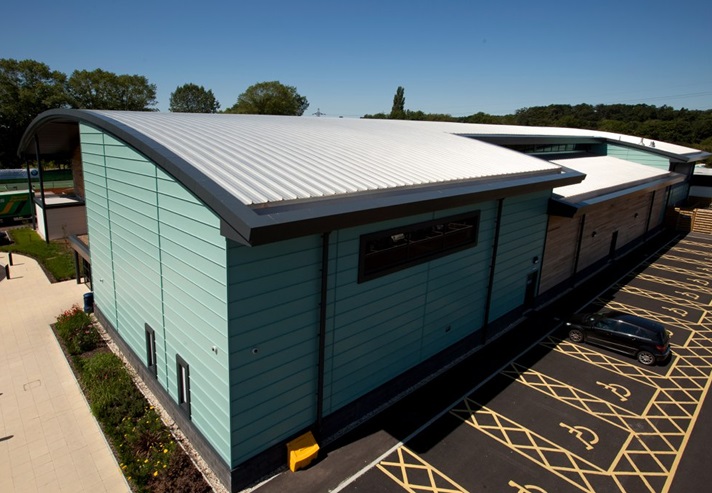Types of roof

|

|

|
Approved document C: Site preparation and resistance to contaminants and moisture, 2004 edition incorporating 2010 and 2013 amendments defines a roof as: ‘Any part of the external envelope of a building that is at an angle of less than 70° to the horizontal.’
A roof is a structure forming the upper covering of a building or other shelter. Its primary purpose is generally to provide protection from the elements, but it may also contribute to safety, security, privacy, insulation, and so on.
Roofs may have openings or windows within them to allow light into buildings, as well as providing, access, ventilation, views, and so on. They also frequently include other features such as chimneys, communications infrastructure, building services, drainage, lighting, access routes, and so on.
Roofs can be constructed from a wide variety of materials and in a wide variety of shapes depending on the requirements they have to satisfy, the local climate, the availability of materials and skills, the span to be covered, and so on.
This article provides links to further information about a range of roof types.
Click on the links below to access more information:
- Blue roof.
- Brown roof.
- Butterfly roof.
- Canopy.
- Clipped gable roof.
- Closed couple roof.
- Cold roof.
- Collar roof.
- Conical roof slating.
- Cool roof.
- Couple roof.
- Crow-stepped gable.
- Cross hip roof.
- Curb roof.
- Dome.
- Domestic roof.
- Dutch gable.
- Fabric roof.
- Flat roof.
- Fly roof (flying roof)
- Gambrel roof.
- Gable roof.
- Geodesic.
- Green roof.
- Half gable roof.
- Hammerbeam roof.
- Hip roof.
- Hyperbolic paraboloid.
- Jerkinhead roof.
- Lean-to roof.
- Long span roof.
- Metal roofing.
- Mansard roof.
- Mono pitch roof.
- Pitched roof.
- Purlin roof.
- Saltbox roof.
- Saw-tooth roof.
- Shell roof.
- Shingle roofing.
- Skillion roof
- Slate roofing.
- Tile roofing.
- Thatch roofing.
- Valley roof.
- Vault.
- Warm roof.
Featured articles and news
Homes England creates largest housing-led site in the North
Successful, 34 hectare land acquisition with the residential allocation now completed.
Scottish apprenticeship training proposals
General support although better accountability and transparency is sought.
The history of building regulations
A story of belated action in response to crisis.
Moisture, fire safety and emerging trends in living walls
How wet is your wall?
Current policy explained and newly published consultation by the UK and Welsh Governments.
British architecture 1919–39. Book review.
Conservation of listed prefabs in Moseley.
Energy industry calls for urgent reform.
Heritage staff wellbeing at work survey.
A five minute introduction.
50th Golden anniversary ECA Edmundson apprentice award
Showcasing the very best electrotechnical and engineering services for half a century.
Welsh government consults on HRBs and reg changes
Seeking feedback on a new regulatory regime and a broad range of issues.
CIOB Client Guide (2nd edition) March 2025
Free download covering statutory dutyholder roles under the Building Safety Act and much more.
Minister quizzed, as responsibility transfers to MHCLG and BSR publishes new building control guidance.
UK environmental regulations reform 2025
Amid wider new approaches to ensure regulators and regulation support growth.
BSRIA Statutory Compliance Inspection Checklist
BG80/2025 now significantly updated to include requirements related to important changes in legislation.























Comments